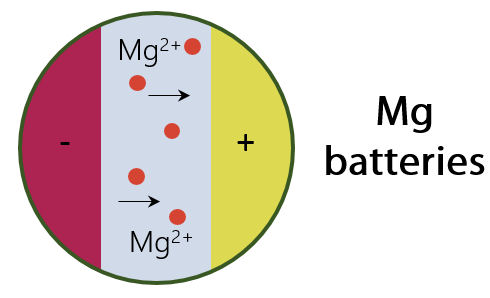
Mg-ion batteries appear as a great alternative to Li-ion batteries due to the high capacity, low cost, abundance and better safety of Mg compared to Li. However, conventional electrolytes strongly interact with Mg metal to form a passivating barrier on its surface. One solution to solve this issue is to replace Mg metal at the negative electrode with Mg alloys possessing adequate stability in conventional electrolytes. Despite great interest, many challenges remain to obtain viable electrodes to replace Mg, which are basically the slow kinetics of Mg2+ transport (due to the strong electrostatic interaction of Mg2+ ions in the solid)1 and the large volume changes upon Mg insertion/extraction.2
In the ANR project MAGICIEN (in collaboration with LEDNA and LIONS), we are currently developing new alloys based on Mg electroactive elements (Bi, In, Sn, Sb,…). A special attention is paid on the nanostructuration of the materials, as it will be beneficial to mitigate the large volume changes predicted upon full magnesiation and enhance the sluggish diffusion of Mg2+ ions in the solid-state. An important goal of the project is to achieve a strong understanding of the reaction mechanisms of the unexplored compounds.

References:
- Highly reversible Mg insertion in nanostructured Bi for Mg ion batteries
Y.uyan Shao, Meng Gu, Xiaolin Li, Zimin Nie, Pengjian Zuo, Guosheng Li, Tianbiao Liu, Jie Xiao, Yingwen Cheng, Chongmin Wang, Ji-Guang Zhang, and Jun Liu, Nano Lett. 14, 255–260 (2014). - Realizing the full potential of insertion anodes for Mg-ion batteries through the nanostructuring of Sn
L. R. Parent, Y. Cheng, P. V. Sushko, Y. Shao, J. Liu, C.-M. Wang, and N. D. Browning, Nano Lett. 15, 1177 (2015).
Contact : Magali Gauthier (NIMBE/LEEL).





